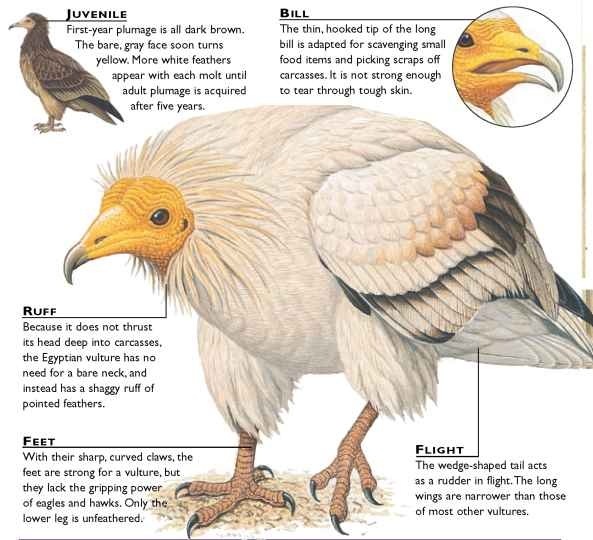Before radio tracking of birds was possible, scientists marked birds with uniquely numbered rings to provide information on the movements of birds, how long they lived and to estimate likely population size and detect population trends.
While radio tracking has some advantages, it has not made marking birds by other means obsolete, and ringing remains a basic tool used by scientists, the data from which can be combined with information from radio tags to better understand bird ecology. The data from both are similar: the bird is "marked" with a radio tag or ring at some known location and time, and then "recaptured or recovered" at some later known location and time. The main difference is that recapture of radio tagged birds is done remotely (and usually more frequently) via the radio signal, and the ringed bird is usually physically caught or found dead.
 |
| Egyptian vulture marked with uniquely numbered metal and Darvic rings (Photo: M. McGrady) |
Some of the main advantages of ringing include its low cost and that it can harness the efforts of amateurs, citizen scientists and the public to collect useful information. In recent years, the availability of high quality optics and affordable high resolution digital cameras has made the accurate identification of birds possible for anyone by examining closely pictures of birds with rings or wing tags and then getting in contact with those who fitted the rings/tags.
 |
| Wing-tagged eagle in Kuwait. |
Because Oman is a winter destination for many birds from farther north, and a stronghold for many species of conservation interest, Oman is a good place to look for marked birds (or at least keep them in mind when you are viewing your photos after a day in the field.).There have been a number of cases of marked birds turning up in Oman, being spotted by birdwatchers or photographers, and identified from their marks, including the steppe eagle below, an eastern imperial eagle from Kazakhstan some years ago, and an eastern imperial eagle in 2015.
 |
| Colour-ringed Steppe eagle near Salalah (Photo: A.Kovac) |
 |
| Close up of colour ring from digital photograph (Photo: A. Kovac) |
So, if you do spot a bird (of any species) in the wild with a ring or find one dead (or you know someone who does),
please report it to us (just make a comment on this blog). If it is one we have marked we will give you information on it; if it is not, then we will work to find out who did ring the bird, and pass that information along. Such information is highly valuable to us as we try to understand these birds and conserve them.
 |
| Colour-ringed Egyptian vulture on a carcass in France. (Photo: C. Ponchon) |









































